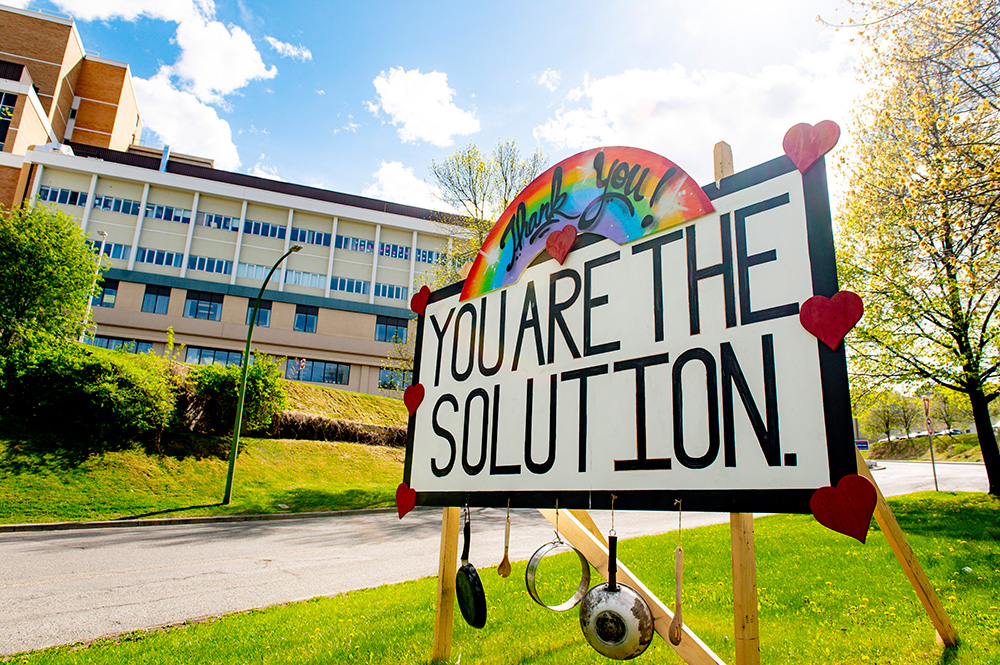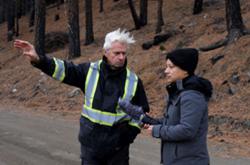Since vaccines began rolling out late last year, many British Columbians have wondered whether the shot would be their pass to hug an elderly loved one, shed their mask or plan postponed weddings.
Not so fast, says provincial health officer Dr. Bonnie Henry. She says British Columbians should still prepare for a spring similar to last year’s.
Travel for spring break in March is out of the question, said Henry, and we likely won’t be taking off our masks this calendar year.
But Henry did offer hope for more gatherings and travel with Canada by mid-year. “I absolutely think by summer we’re going to be in a very different situation. As long as we can hold our line right now,” she said on Jan. 26.
Henry’s cautious optimism highlights the reality that vaccine-driven declines in hospitalizations and deaths won’t be reason enough for a “return to normal.”
Modelling data presented in early February suggests the more than 150,000 vaccines administered in B.C. are already bringing down deaths and hospitalizations, particularly among residents of long-term care.
But two experts in immunology and genetics say preventing the spread of new variants requires us to stick with measures to reduce transmission.
That involves wearing a mask, physical distancing and avoiding large gatherings. Without these actions, we could undo the vaccine’s protection as quickly as we get it.
“If transmission stays high here, it could just as easily be a B.C. variant people are worried about,” said Jeffrey Joy, an assistant professor of medicine and expert in evolutionary genetics of infectious diseases at the University of British Columbia.
B.C. reported 40 cases of variants of concern last week, which have emerged from the United Kingdom, South Africa, Nigeria and Brazil in recent months.
Each time the virus multiplies during an infection, there is potential for its genetic material to be miscopied, creating a small mutation. The more the virus transmits and infects people, the greater the number of overall mutations created.
Most of these mutations will have no real effect or may even harm the virus. But some will increase its ability to transmit or survive a robust immune response.
Viruses live to infect and spread. And when the viruses are given the chance to transmit and proliferate, those helpful mutations carry over again and again until they become a variant defined by that advantage.
Many of the identified variants are more easily transmitted, and some could cause more serious illness or be less responsive to current vaccines.
Claire Cupples, a microbiologist and professor at Simon Fraser University, said high levels of infection and transmission raise the risk of new, more dangerous variants.
“The more virus you have, the more variation you have,” said Cupples. “We’re going to see those variants spread, and even if we don’t get them from outside the province, we’re likely to generate some of our own anyway.”
And high transmission rates while the vaccine is rolling out could lead to the spread of variants that aren’t affected by the current vaccines.
“The fact that the virus changes means even those who are vaccinated or previously infected might get reinfected with the original virus or another variant,” said Cupples.
Vaccine-resistant variants are a risk, because while we have evidence about vaccination’s effectiveness in preventing infection, we don’t know yet if or how vaccines stop transmission from one person to another.
Both vaccines approved for emergency use in Canada, produced by Pfizer-BioNTech and Moderna, do not necessarily prevent an infected individual from transmitting the virus to another person.
This is an unfamiliar concept to many, says Joy. The regular vaccines we’re used to for polio and smallpox have “sterilizing immunity,” which means they prevent transmission between the vaccinated and the people they come into contact with.
There is early evidence to suggest the Pfizer-BioNTech vaccine can reduce transmission from a vaccinated individual, because the vaccines teach your body how to detect and fight a COVID-19 infection by stopping it from multiplying early. That means less potential for transmission, the logic goes.
But there is also a two-week lag between the first dose of each vaccine and developing some form of immunity, and peak immunity does not come until after the second dose as many as 42 days later.
And without solid evidence, now isn’t the time to make assumptions about transmission based on earlier vaccines.
“We’re in this escalating arms race, trying to see what the vaccines should look like and how they work and how that’s going to affect the things we can do,” said Cupples.
Despite the unknowns and limits of our current vaccines, our current vaccination and physical distancing efforts are likely not in vain.
Keeping transmission low means potential variants will hit more dead ends than transmission opportunities, said Joy. “It’s critical to reduce possible mutations so the vaccine can do its job.”
And the very nature of the current messenger RNA vaccines is promising for its ability to adapt to prevent future variants, Cupples said.
This is the first time mRNA vaccines have been used to protect against infectious diseases, and their more than 94-per-cent effectiveness rate signals the same technology could be useful for other coronaviruses.
While most vaccines for other illnesses introduce a weakened version of the virus in order to teach one’s immune system how to respond, mRNA vaccines only teach our cells to respond to a type of protein — a spike protein — found on the surface of the COVID-19 virus.
Once detected by one’s body, these proteins trigger an immune response, creating antibodies that protect us from COVID-19 introductions and preparing us to recognize and fight future infections.
These mRNA instructions can be changed to fit the virus, building Cupples’ confidence that vaccines can keep up with variants if people keep transmission low.
Since mRNA vaccines teach our bodies to trigger an immune response, they bypass the time-consuming process of sequencing proteins or viruses synthetically used in past vaccine technologies, said Cupples.
“In conventional vaccines, you have to grow huge batches of the virus in host cells cultured in the factory lab, collect the virus, inactivate or weaken the virus and inject that,” she said of the lengthy process.
But for these new vaccines, mRNA can be cloned or made from scratch as soon as the important part of the virus DNA is isolated.
And when a variant has a different critical part of the DNA, vaccine manufacturers just need to input the new portion into the existing vaccine process to have an effective shot.
It means the vaccine technology is “a sort of plug and play,” said Cupples. “If you know how the virus is changing, in theory you can change the vaccine very quickly.”
That could mean COVID-19 vaccines become an annual or bi-annual occurrence to provide updates and boosters, much like our flu shot program, said Cupples and Joy.
This spring will be the “sprint” to keep transmission low without the natural assistance of warmer summer weather, said Cupples.
And summer will be a critical time to ramp up vaccine production and work on developing shots to cover any and all current variants.
But if people don’t hold the line on distancing and masking — and the province doesn’t limit imported variants of the virus through stricter border controls — the virus could still get away from us.
“It’s astonishingly incredible that we have these vaccines already, so we’re really fortunate in that regard,” said Joy. “But I think we have to be a little bit patient; we have to be patient to maintain other things that limit the spread of the virus.”
If people understood the importance of keeping transmissions low, there would be “fewer people wanting to take off masks,” said Joy. “We wouldn’t want people to get too confident.”
Teaching people about the limits of this new technology will be key to keeping public support strong until the majority of people are vaccinated in early fall, he said. ![]()
Read more: Health, Coronavirus

















Tyee Commenting Guidelines
Comments that violate guidelines risk being deleted, and violations may result in a temporary or permanent user ban. Maintain the spirit of good conversation to stay in the discussion.
*Please note The Tyee is not a forum for spreading misinformation about COVID-19, denying its existence or minimizing its risk to public health.
Do:
Do not: